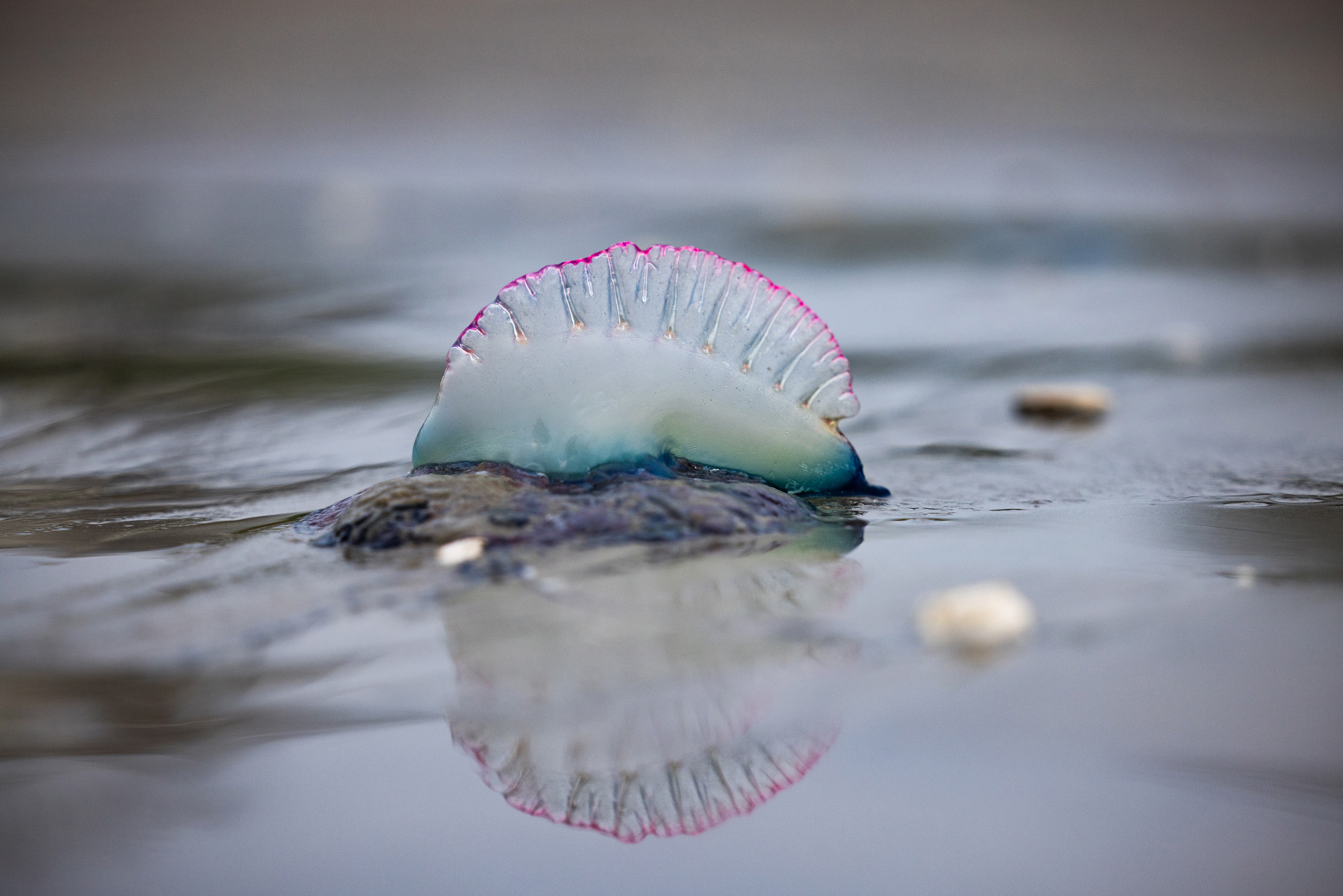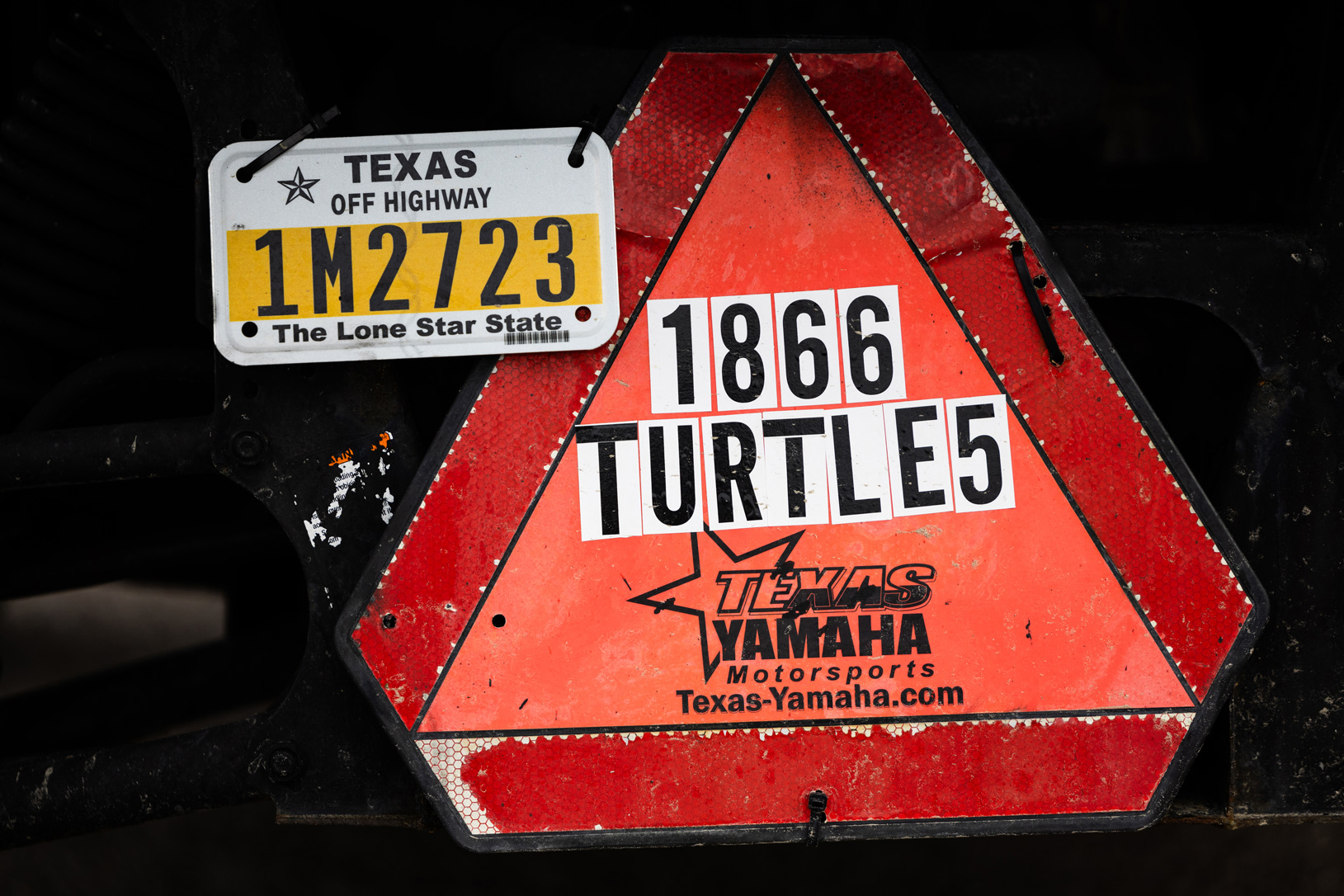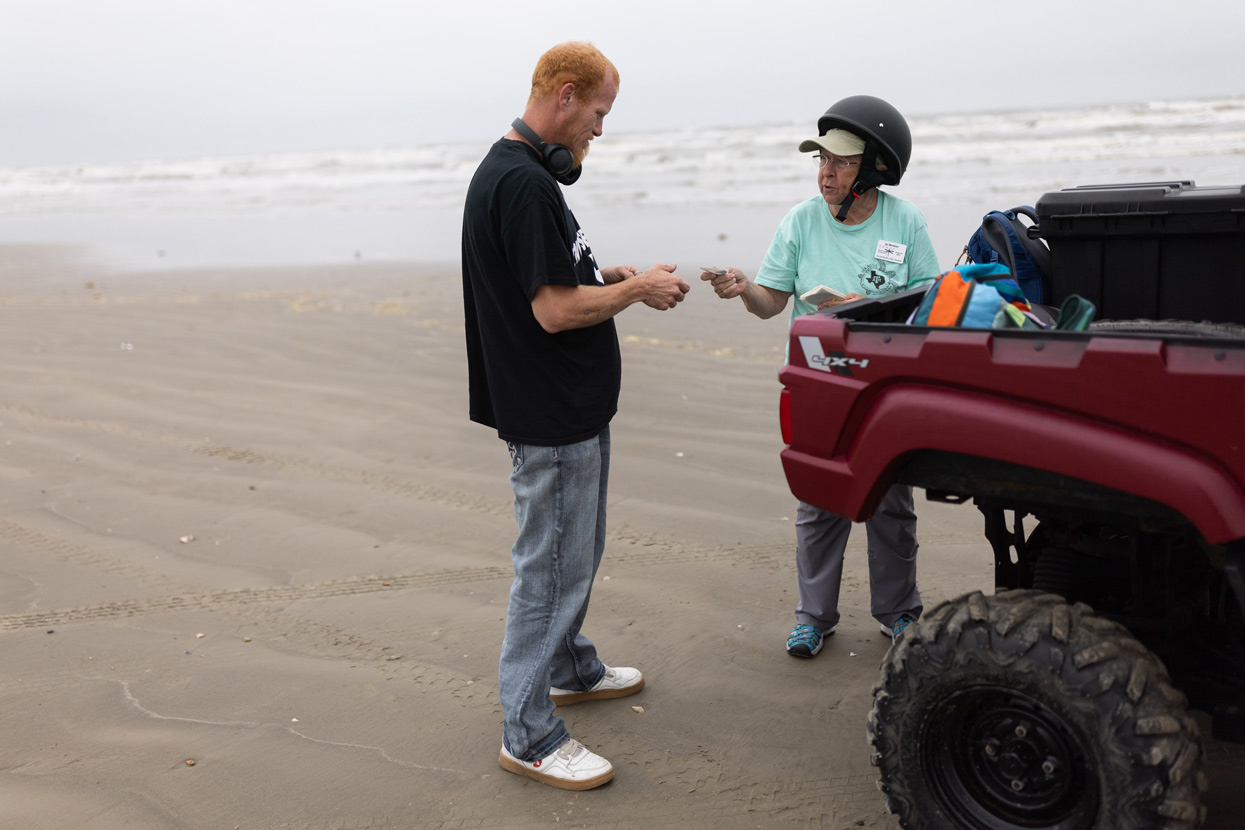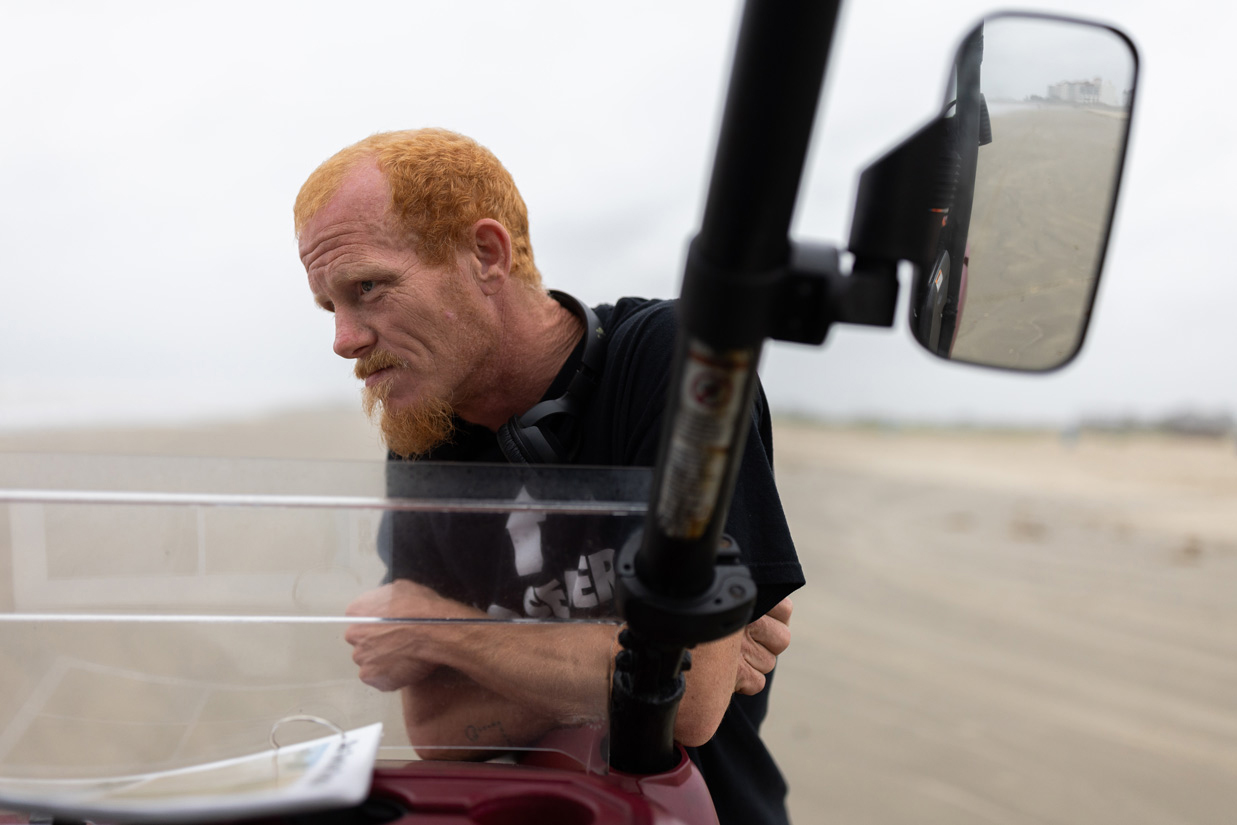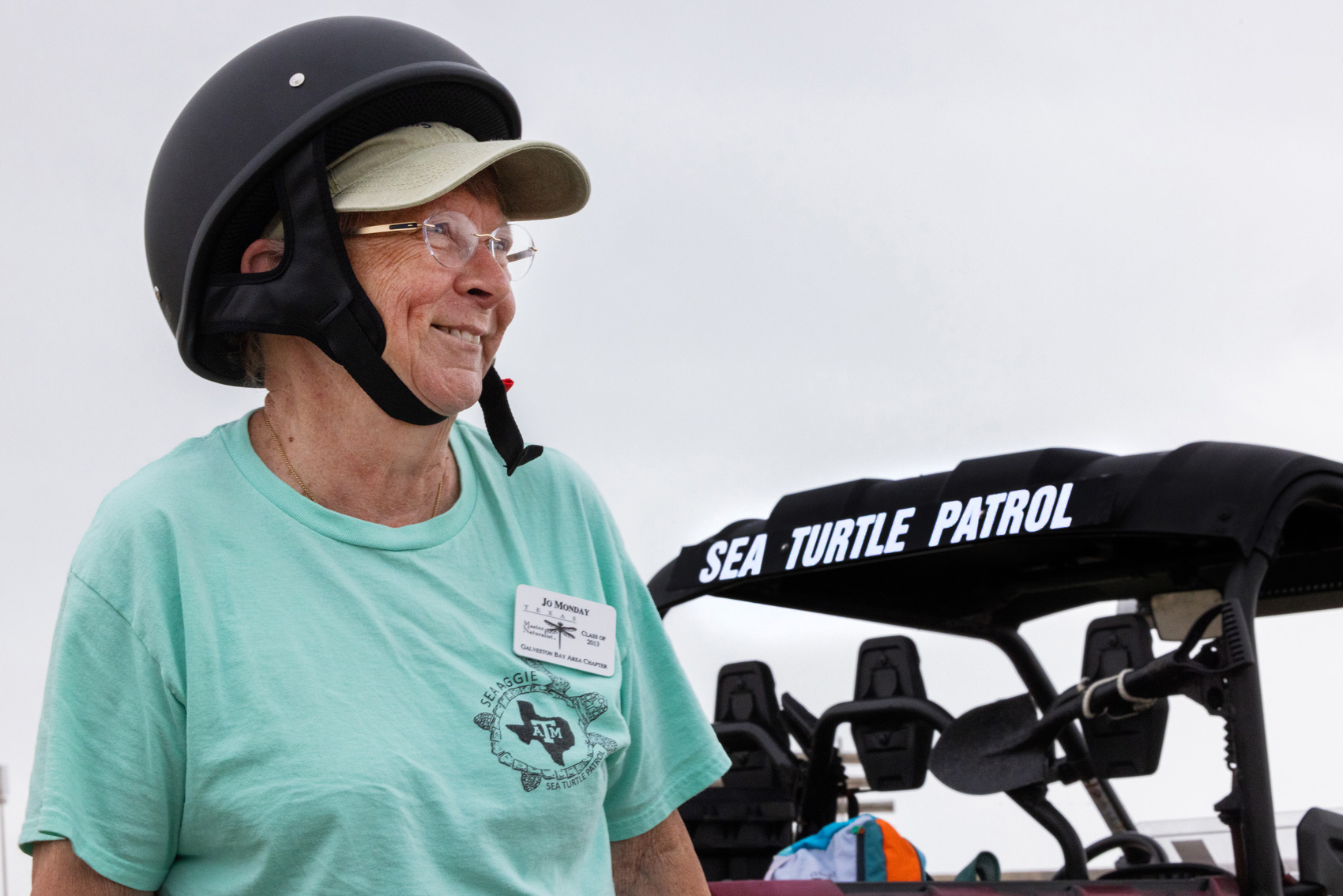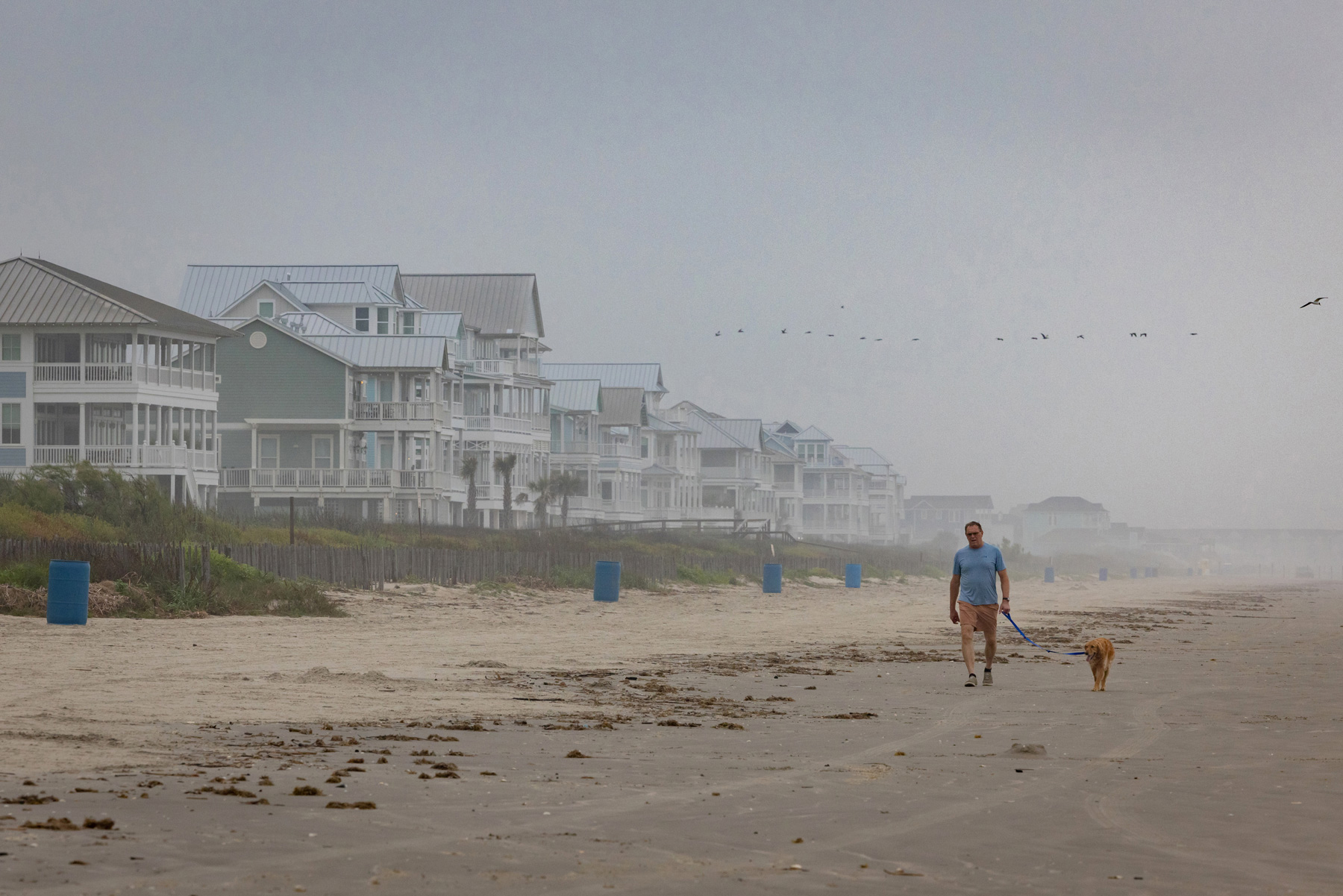|
Getting your Trinity Audio player ready...
|
The sixth Portuguese Man o’War spotted on Jo Monday’s patrol down Galveston Beach on Wednesday is squished and dead. It’s gross, but she is not concerned. Her aim, like most weeks in the spring, is searching for signs of the Kemp’s ridley sea turtle – the most endangered species of sea turtle in the world.
From April to July, Monday, along with around 300 volunteers, patrol Galveston Beach on utility terrain vehicles and on foot. The 76-year-old retiree – decked with her Texas master naturalist badge and UTV helmet – is on the lookout for any sea turtles or, more likely, sea turtle tracks that could lead her to a nesting site.
She pulls over again after seeing some disturbance in the sand. But it’s a false alarm.
“You always have to be careful,” Monday said, putting the UTV back into drive. “Even if you aren’t sure, you should check it out because you don’t want to miss anything.”
If Monday did find one, she’d call it into the Gulf Center for Sea Turtle Research based at Texas A&M University in Galveston – where Monday and the others volunteer. The eggs would then be taken to Padre Island National Seashore near Corpus Christi to hatch and be released.
Monday’s route today is three miles, starting at 7 a.m. The weather – cloudy and damp with few people walking the beach – is perfect for the turtles.
Still, Monday is fully prepared to not find a single one.
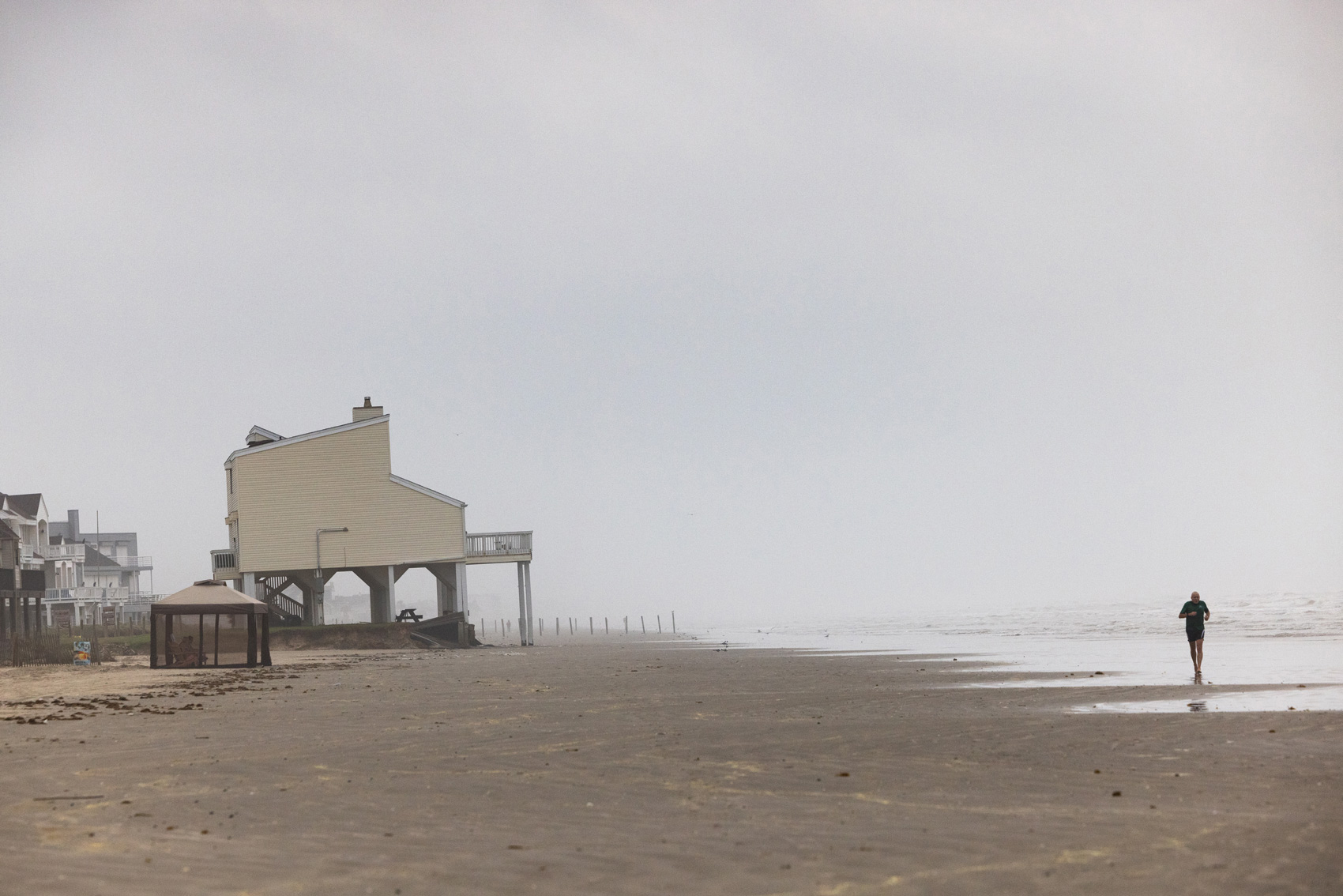
An endangered species on the Texas coast
The Kemp’s ridley sea turtle faces numerous threats during its nesting season in late spring and early summer. Beach driving, predators, rising tides, trash and development leave the turtles and their nests in danger of being crushed, drowned or suffocated on plastic. Experts and state wildlife officials are urging residents who use the beaches in Galveston and elsewhere to practice caution and call in turtle eggs when sighted.
Turtle patrols tour the beaches nearly every day to save what turtles can be found. Galveston Beach is not safe for the turtles to hatch, and the safest space for them is at a protected lab. Only then, experts say, can the turtles survive and save the population.
For Monday, the patrol also comes with educating the public. The UTV is labeled “Sea Turtle Patrol” in big white letters, causing people to stop and ask questions.
One woman walking the beach waves Monday down.
“I’ve been keeping an eye out every day,” she said. “If I see anything, I’m letting you know.”
Protecting the Kemp’s ridley sea turtle
In the early 20th century, the Kemp’s ridley sea turtle thrived in the gulf, with thousands of nestings at a beach in Rancho Nuevo, Mexico. Over time, however, human activities, such as fishing and development, rapidly decimated the population until the 1980s, when there were only 250 nesting female turtles left.
To save the species from extinction, conservation groups worked for years to bring the population back from the dead. Today, there are about 30,000 nesting turtles. The Gulf Center – which is run by Texas A&M and marine biology professor Christopher Marshall – is just one of those programs.
Still, the work is ongoing, according to Paige Breon, the nesting program manager for the Gulf Center for Sea Turtle Research. The center, which began in 2020, is run through biology professor Christopher Marshall with Texas A&M.
“Texas beaches are kind of like the highway, so we want to be patrolling to make sure that if any sea turtles or nests that come up, we see them before anything can happen to them,” Breon said. “A lot of things can happen on the beach. Some people dig holes they fall into, people leave chairs and umbrellas the turtles can get trapped under. It’s a lot.”

Beach trash threatens Texas sea turtles
In one case, Monday said a turtle was rescued by Texas City with a fishing line wrapped around its flipper. The turtle survived, but its flipper had to be amputated.
“That turtle lost a flipper because someone didn’t bother to take their fishing line and put it in the right place,” Monday said.
Along with the turtle patrol, the Gulf Center also runs a turtle hospital, where hundreds of turtles are treated every year. The team at the center responds to and rescues about 250 sea turtles per year on the upper Texas Coast.

The tide and predators also pose a risk to the turtles. Creatures like coyote red wolf hybrids will sniff out and eat the eggs, while crabs or ants can disturb the eggs – tossing them around or breaking them.
One student at the Gulf Center installed a bunch of mock nests throughout Galveston Island beaches and after the season found that the high tide and weather affected every single nest. Not a single egg would have survived.
Because of these hazards, the turtles are sent down to an incubation lab to hatch at the Sea Turtle Science and Recovery division at the Padre Island National Seashore. There, the turtles have a 90 percent hatchling rate every season.
About 12 to 20 nests are found per season on the Upper Texas Coast. When discovered, members from the center pack the eggs and sand in a styrofoam container to imitate how they were positioned by the mother turtle.
This sand is important too, said Breon. Researchers have inferred that the turtles imprint on the sand they are hatched on and feel connected to it. Which is why the turtles found in Galveston often make their way back to Galveston to lay their own eggs.
“Then the cycle continues,” Breon said. “We collect those eggs and keep it going.”
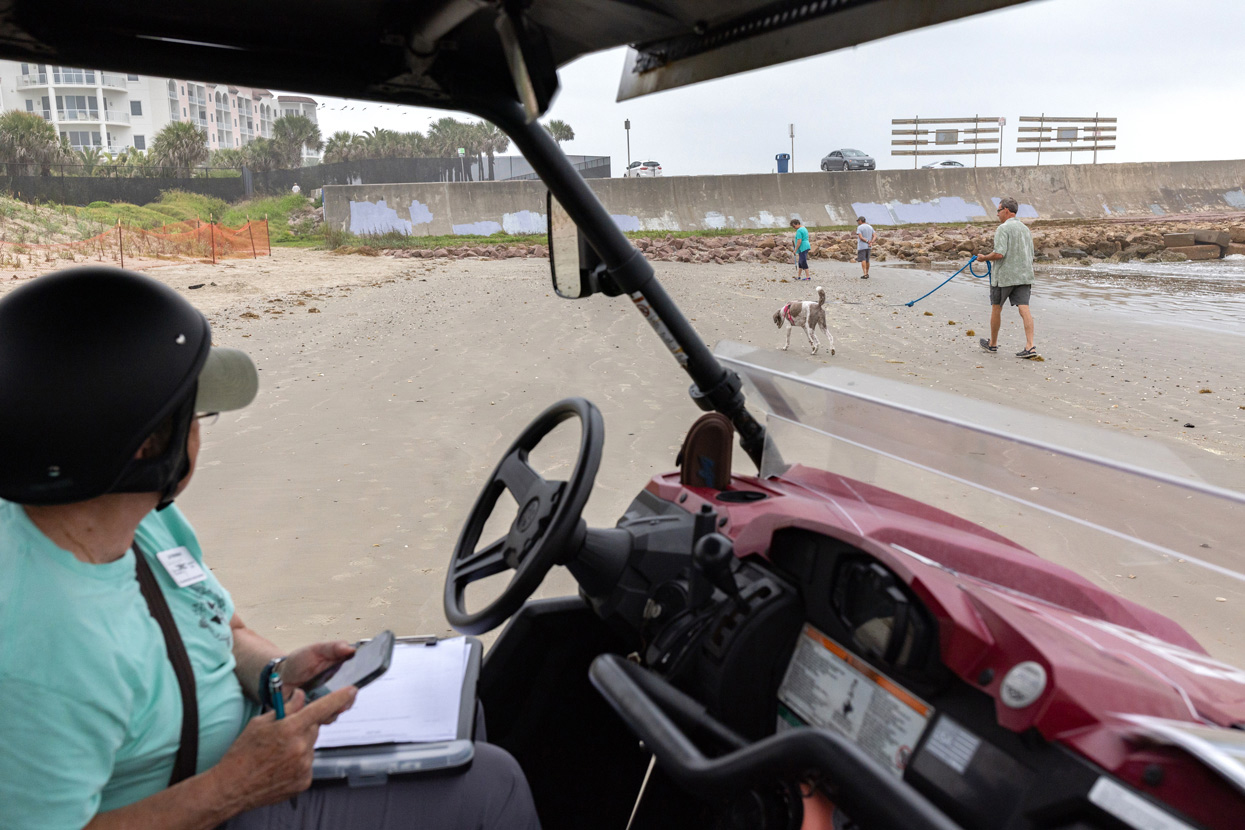
Drawn to the beach and Texas wildlife
When Monday was a child growing up in Houston, she’d ask questions about beach wildlife. It fascinated her, why some animals no longer existed, why some were endangered.
She eventually became a social worker, but always had an affinity for Galveston Beach. Now, on the beach, she has no doubt she’s in the right place.
Every other week, she wakes up at the crack of dawn to drive an hour from her place near Hobby Airport to the beach to ride for the turtles. She isn’t the only one working the field, either.
Freda Johnson, the coastal zone management team leader for the Galveston Park Board, is up early picking up trash and watching for turtles from 6 a.m. to noon nearly every day. The trash isn’t as bad as other days. Little turtles can get confused by small pieces of trash and plastic in the ocean, thinking it’s something to eat and the trash will get stuck in their bodies or throats, choking them or clogging their digestive tract.
“Spring Break was something,” she said, stopping her truck to pick up some plastic rubbish. “You go back and forth and there’s always more.”
Johnson, 58, also hasn’t found any turtle tracks.
A little ways from Johnson, another beach-goer waves down Monday. He’s interested in helping out on the beach after seeing the logo on the UTV.
Monday parks and gets out to give the man some materials for volunteering with the Gulf Center. Interest is common, Monday said, but often too late. Training already occurred for new volunteers, so interested parties will probably have to wait until next year.
Monday is always excited about it, though. The more people who can help, the better chances of not missing a single turtle nest. She tells most people that they can help out by just being aware, calling in a spotted turtle or eggs and picking up trash.
Toward the end of the ride, Monday notices a man picking up some fishing line to dump in the trash. She slams on her breaks and calls out , ‘Thank you!’ The man, startled, walks over.
“This matters,” she tells him. “What you do matters.”


